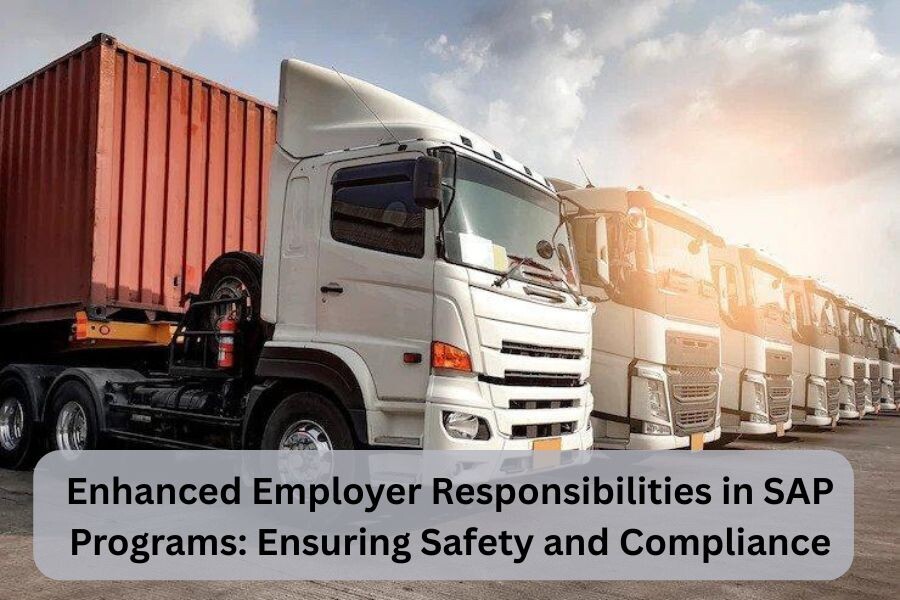In the Department of Transportation’s (DOT) commitment to maintaining public safety, employers of safety-sensitive workers play a critical role in enforcing the Substance Abuse Professional (SAP) program guidelines. While the focus is often on the employee’s return-to-duty process, the employer’s legal and procedural responsibilities are equally important.
Understanding and fulfilling these obligations not only helps ensure DOT compliance but also supports the overall safety and productivity of the workplace.
⚠️ 1. Immediate Action: Remove Employees from Safety-Sensitive Duties
Once an employee has violated a DOT drug or alcohol regulation, employers are required by law to:
Immediately remove the individual from safety-sensitive functions (e.g., operating commercial vehicles, handling hazardous materials).
Document the incident and notify appropriate parties, including Designated Employer Representatives (DERs).
This is a non-negotiable step that prevents liability and protects public safety.
👩⚕️ 2. Referral to Qualified SAPs
Employers must refer the employee to a DOT-qualified Substance Abuse Professional for evaluation. The SAP will:
Conduct an initial assessment
Recommend education or treatment
Determine when the employee is eligible for return-to-duty testing
Employers should maintain a list of approved SAPs or partner with reputable organizations like AACS Counseling, which offers same-day evaluations and nationwide virtual access.
📋 3. Monitor Treatment and Return-to-Duty Compliance
Once the SAP has created a treatment or education plan, the employer’s responsibility continues. This includes:
Verifying that the employee completes all requirements
Ensuring that a follow-up evaluation is scheduled
Coordinating Return-to-Duty and Follow-Up Testing according to the SAP’s instructions
Employers must also maintain records to demonstrate compliance in the event of an audit or inquiry.
🔐 Why Employer Involvement is Essential
DOT regulations are strict for a reason—safety. When employers take a proactive role in SAP programs, they:
Reduce legal risks and liability
Maintain operational integrity
Support employees in returning to duty responsibly and successfully
In short, employers are not just enforcers—they’re facilitators of rehabilitation and reintegration.
📞 Need Help Managing SAP Referrals and Compliance?
AACS Counseling partners with employers nationwide to provide DOT-compliant SAP evaluations and employee support services. Whether you’re a large fleet or a small business, we ensure your organization remains compliant and your employees receive expert care.
📞 Call Now: 800-683-7745
🌐 DOT SAP Services for Employers
🌐 SAP Evaluations Across the U.S.












